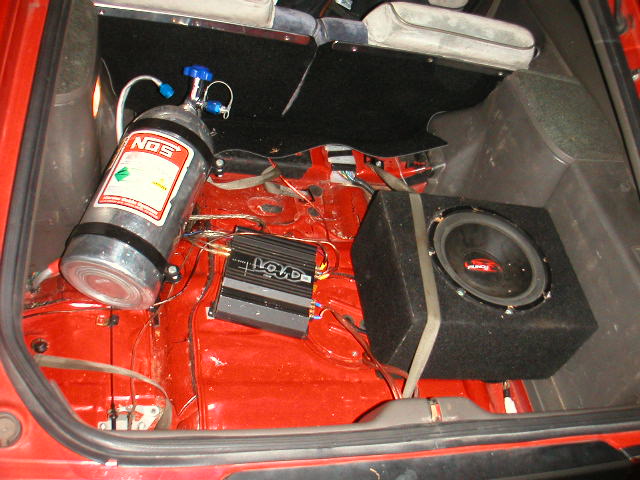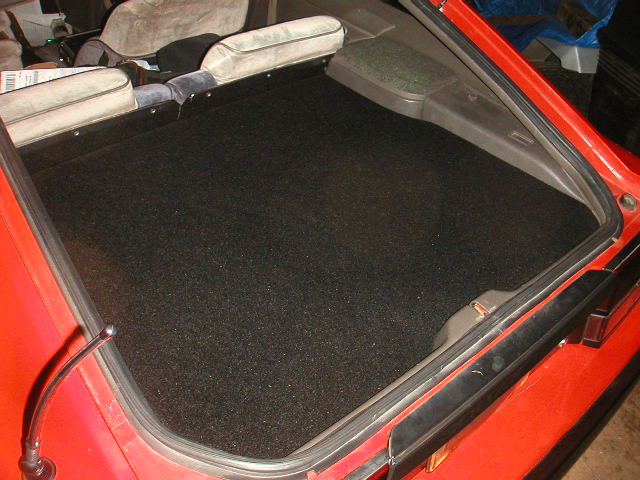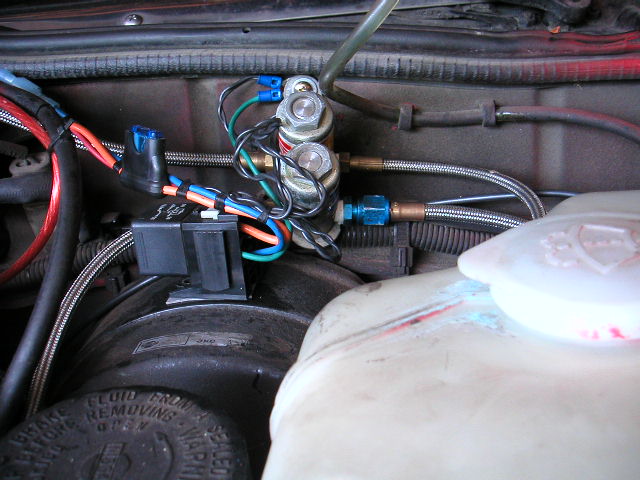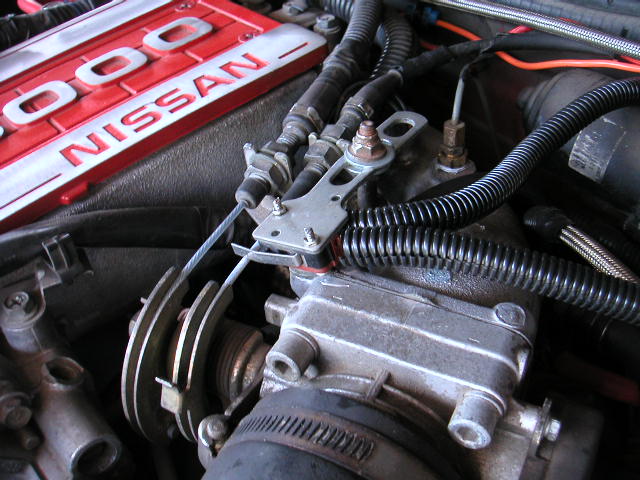
Nitrous Installation:
So you want to go fast? Nitrous is a fun, affordable, reliable and easy way to go fast. Most of the fastest drag race cars in the world use nitrous. Let us get a few things straight before you start knocking on nitrous (get the pun?).
· A properly installed and tuned nitrous system will be safe, effective and reliable.
· Nitrous will not "blow up" your engine. Too much nitrous, detonation, running lean, previously damaged (IE headgasket?) or worn out engines are usually the cause of any failures related to nitrous.
· You can't inhale it, it's not safe to breathe. At least the stuff you get at most refill stations. It contains sulfur dioxide, which is not a good idea to inhale, and for just that reason it is added. If you don't believe me, then by all means try it for yourself.
· It's not "cheating" if your engine can handle it. People that call it cheating are just sore, slow, total losers. Also, chances are these people have never installed or used nitrous before. They are simply ignorant, enough said. Nitrous is a completely legitimate way to make power.
So what did nitrous do for my car? Well, in the quarter mile a 90hp shot took me from a ~13.5@103mph to a ~12.3@112 with no other modifications except for pulling timing so it would not detonate. Once I had some other engine work done, the same shot made the car trap at 124MPH; and Next year I am shooting for 130MPH+. Nitrous and turbochargers work very well together.
With that said, you can hopefully understand a little of what nitrous is capable of.
Nitrous systems: Wet, Dry, and Direct port
· Wet shots inject fuel with nitrous. The fuel and nitrous have individual jets sized according to their pressures. You can calculate the jet sizes needed for a particular amount of additional horsepower using simple online utilities such as this one:
If you have a FMU, don't forget to use the peak fuel pressure, not the base fuel pressure.
· Dry shots just spray nitrous into the intake, with the additional fuel being supplied by the fuel injectors. Highly NOT recommended for most cars with stock fuel systems. If you have a fancy standalone and big injectors, you can configure and tune a profile for the extra fuel needed with the nitrous.
· Direct port nitrous is usually a wet
shot, consisting of individual nozzles for each intake runner on the engine. I
have never seen direct port nitrous in person on a Z31 in the
With any of these systems, though direct port will be tough to accurately tune below ~130HP on a V6, the size of the shot is up to you. Simply put, bigger engines can handle more nitrous safely. A 100 shot on a Honda Civic is rather big, where on a Pontiac Trans-Am it would be considered rather small. The VG30ET has been proven reliable at 125+hp shots of nitrous, provided enough timing is backed out.
Another thing to consider is the distribution of the air through the intake manifold. This directly relates to the distribution of nitrous with a single fogger nozzle, and hence how much nitrous each cylinder gets. It goes without saying that equal is best, this is the biggest advantage of direct port nitrous.
Installing a nitrous system is rather easy. Anyone with most of their brain and some fabrication skills can install a regular "wet" kit on a z31. Essentially you have a very few parts to a "Single Fogger" "Wet" nitrous kit:
· Arming switch (in cockpit)
· Throttle switch (on gas pedal or by throttle body), activates at wide open throttle only.
· Power relay, to trigger solenoids.
· Solenoids, for fuel and nitrous.
· Fogger nozzle.
· Bottle.
· Lines, blow down tube, etc.
· Optional: Bottle heater, remote bottle opener, nitrous line purge kit.
1. Start by mounting the bottle in the back of the car, it has to be somewhere behind the seats, preferably with the knob facing forward and up for best siphon action. This can be tricky, try not to drill into the gas tank ;-)
Hiding the bottle is entirely up to you. If you're worried about it being stolen then by all means hide it in the spare tire well or cover it with something. The only people I am concerned with seeing it are Police. As with radar detectors, if they see nitrous bottles then chances are they won't go easy on you for an infraction of any kind. I simply made a rear cargo cover that completely covers the nitrous bottle, amplifier and subwoofer in the back of the car.


2. Run the nitrous supply line under the carpet to the firewall, either use an existing hole or drill a new one into the engine bay (BE CAREFUL and MEASURE) to feed the line through. Also, make sure the hole is lined with a rubber or plastic grommet.
3. Install solenoids in a convenient location and make sure they make good ground contact with whatever hole you drill for the mounting brackets. Run the wires for the power relay into the car from the engine bay.

4. Install cockpit arming switch, illuminated switches are nice to have.
5. Next, hook the relay trigger wire up to a 12V+ power source (I used the cigarette lighter), and connect the ground (if it's an illuminated switch) to one of the inner shift boot or console screw locations, be sure it makes good contact.
6. Mount the full throttle switch, usually the throttle body is the preferred location. Get creative here; mounting this thing can be a little tricky. This is how I did it:

7. The 12V+ wire coming from the “cockpit arming switch” is run to the full throttle switch. This is for obvious reasons; so the nitrous only sprays under full throttle! From the full throttle switch it is run to the relay. Now connect the main + power source for the relay (usually an orange wire) to the battery. If there is not already an inline fuse towards the battery end, install one. I would recommend wrapping all of the wires in loom like I did, not only for visual appeal, but to safeguard the wires from heat and whatnot.
8. Now drill and tap a hole in the pipe right before the throttle body (be this your intercooler pipe or whatever, you can also tap into the throttle body itself right before the butterfly), install the fogger nozzle, flare jets and lines in the appropriate fashion. Be careful not to run them next to anything extremely hot, and give them slack for engine movement. Open the (hopefully full?) bottle and test the system with the ignition and arming switch on (but not with the car running) by tapping the full throttle switch. Now hopefully you can see it's quite easy to install.
It's time to take it for a spin! Remember, backing out timing is critical to running safely with nitrous. Also, the lower the nitrous pressure is (cold, low bottle or both) the less power you will make and the richer your engine will run. It's a good idea to invest in an automatic bottle heater, though not completely necessary. Tuning is up to you, I would suggest doing some additional reading, there are many good books on the subject. One example:
Supercharging, Turbocharging, & Nitrous Oxide Performance Handbook
Have fun with your now more powerful car, but be safe.
Just be careful to back out enough timing (and/or run high octane fuel, 100+) so your engine does not detonate and destroy itself. I had to back out about 5 degrees in order to run a 90 shot on 93 octane fuel. Consider the fact that my engine is already fairly close to the detonation threshold at 13PSI with 9:1 compression, and that's actually not much timing to have to back out. Individual results may vary.